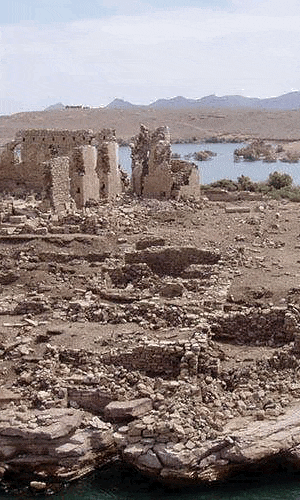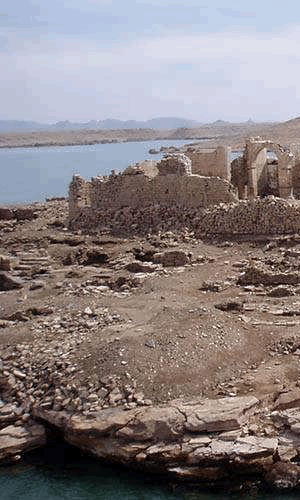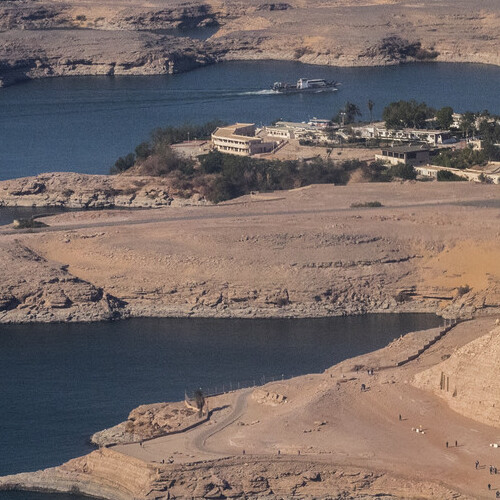No other nation in the world says ‘Welcome’ as often as the Egyptians, and every time, they mean it. While the ancient civilization of Egypt continues to amaze, contemporary Egyptians are equally remarkable.
Qasr Ibrim
Qasr Ibrim: A Testament to Nubian History and Cultural Resilience
Qasr Ibrim, a site of profound historical significance in Egypt, stands as a testament to the resilience and complexity of Nubian culture through the ages.
Geographical and Historical Significance
- Location: Originally perched atop a high cliff east of the Nile, Qasr Ibrim now partially sits on an island formed due to the construction of the Southern Aswan Dam.
- Accessibility: Currently, it’s visible only from boats on Lake Nasser and is closed to the public, though archaeological work continues under the Egypt Exploration Society.

Name and Origins
- Etymology: The site’s name, Qasr Ibrim, translates to “Fort of Ibrim” in Arabic, evolving from ancient names like Primis (ancient texts) and Phrim (Coptic).
- Speculated Beginnings: While its exact origins are unclear, it’s believed to have been built during Egypt’s Middle Kingdom, possibly as a strategic point controlling Nile trade routes. Archaeological evidence dates the earliest artifacts to around 1000 BC.
Historical Turmoil and Changes
- Roman Occupation: Following the Battle of Actium in 31 BC, Qasr Ibrim became a Roman outpost. It saw conflicts with Nubians under Queen Amanirenas and fluctuated between Roman and Nubian control, witnessing various peace treaties and occupations.
- Resilience Against Religious Changes: Remarkably, Qasr Ibrim remained a center for traditional Egyptian worship despite the spread of Christianity and later Islam in surrounding regions. It withstood Theodosius I’s decree against pagan temples in 390 AD, though eventually converted to Christianity with the conversion of temples into churches.

Religious and Architectural Heritage
- Shrines and Temples: The site was home to shrines for Hathor, Horus, and First Cataract deities, relocated due to Lake Nasser. A shrine by Usersatet, governor under Amenhotep II, is now in the New Nubian Museum in Aswan.
- Christian Conversion: The conversion of King Tahargo’s temple into a church and the construction of a cathedral dedicated to the Virgin Mary in the 7th century marked Qasr Ibrim’s transition to Christianity.
Archaeological Discoveries
- Significant Finds: Artefacts like the stele of King Amenhotep I, the tomb of Bishop Timotheos, and a page from the Book of Revelation in Nubian, along with various personal effects, have been discovered here, now housed in the British Museum.
- Cultural Transition: The site’s history reflects the gradual change from Egyptian paganism to Christianity and, eventually, to Islam following the Ottoman conquest.
Qasr Ibrim stands as a unique historical site, encapsulating the dynamic shifts in religious, cultural, and political landscapes of Nubia and Egypt over millennia. Its rich heritage and the continuous archaeological work shed light on the diverse chapters of its past, contributing significantly to our understanding of the region’s history.
Created On March 18, 2020
Updated On september 1, 2024



